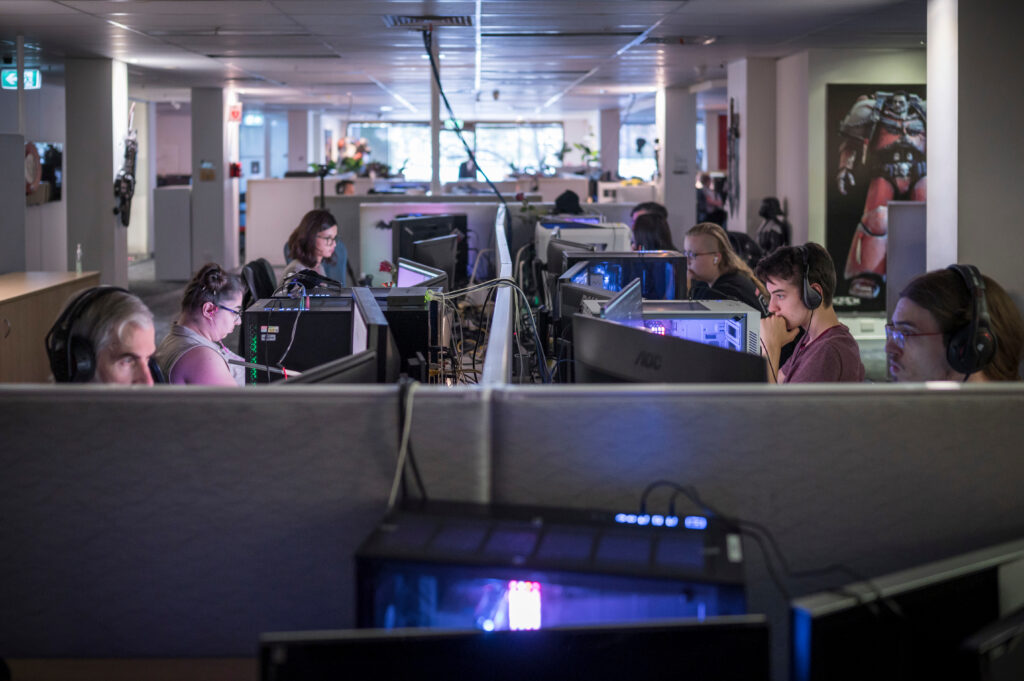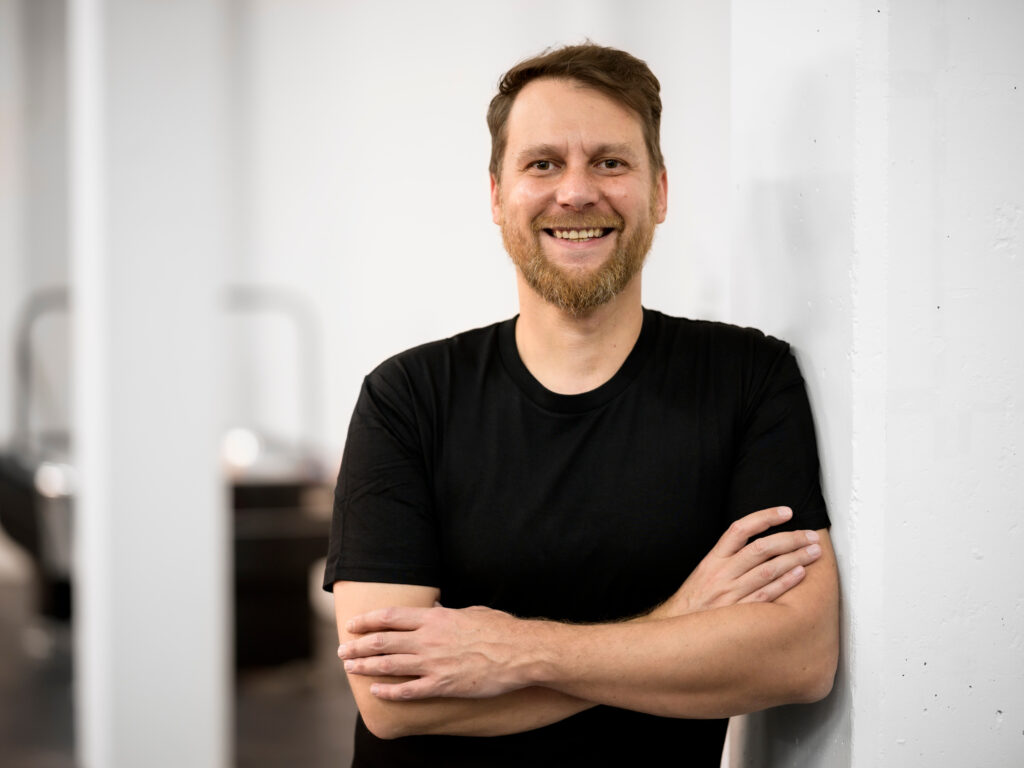
What’s common among the world’s most epic video games like Tomb Raider, Hitman, Dawn of War and Bioshock? It is Plastic Wax’s midas touch. Having long remained elusive, Plastic Wax has been the gaming industry’s best kept secret for over a decade now. With a solid background of over 20 years in gaming and film animation industry, the Sydney-based animation powerhouse is on a roll as they just finished working on Netflix’s upcoming episodic interactive animated show Battle Kitty.
With no plans of resting on past laurels, Plastic Wax is fast emerging as a go-to vendor for all things animation be it game trailers, animated series and premium originals like Battle Kitty. What’s extraordinary about the forthcoming show is that it is fully created in Unreal Engine which is touted to be the game-changer for the entertainment industry (no pun intended)
With a team of over 130 talented artists and a state of the art motion capture facility using the latest in technology, Plastic Wax is the name behind a vast majority of world’s biggest gaming titles. The secret sauce behind their success is their long-standing tryst with Unreal Engine that the world is only now beginning to grasp the wonders of.
In a bid to pluck their enigma from obscurity, we spoke to Plastic Wax founder & director, Nathan Maddams and VP of business development Cindy Airey to know about their journey, their expectations and their plans ahead.
Having been one of the premier creators of video game trailers, doing cutting edge work for partners like Warner Brothers, Disney, Avalanche Studios, and Netflix, they are now expanding their footprint across the world by adding more studios.
Speaking about the diversified raft of services that they continue to offer and their plans, Airey shared, “We have been involved in providing our services for video games in engine, cinematics, trailers and we recently completed a series for Netflix, Battle Kitty. We’re also adding another studio. Most of our clients are in the US, Europe and Asia. Almost 75 per cent of them come from the West coast of the US.”
Reflecting on their journey, Maddams shares that the reason they have been out of the limelight is because the amount of work that they were doing, didn’t allow them to spare time for advertising their offerings. He notes, “In the early days, I think we were fortunate to some extent to be in the right place at the right time and have the right skill set. We have worked on games like Tomb Raider, Hitman, Dawn of War etc. We’d do one project and then word of mouth would get us more projects. We barely had a web presence. We were almost too busy to market ourselves, so a lot of people didn’t know our scope until they worked with us. They’d say ‘You worked on BioShock? Wow!’ We were so busy in the early days we didn’t have time to get out there to tell people what we were working on.”
When asked if they had worked on any projects in the early days apart from the popularly known game trailers, Maddams answered, “Yes, we had varying projects from in-game animation to working on some Australian kid IPs including the very popular ‘Wiggles.’ I came from a very cinematic approach to these projects seeing CG as an art form that had not been fully explored “
While they have worked on a range of varied projects spanning game trailers, in-game cutscenes and cinematics for big titles, long-form projects in engine, what stands out is the vast repository of game trailers. Explaining why we mostly see game trailers associated with them on the net, they shared, “What we show on our site is what we’re allowed to show. The work we’re doing now is more evenly split – long-form projects in engine equally to game trailers. More and more we’re finding we are somewhere down the middle; a good cross section of both types of projects. Cinematics for big titles, in-game cutscenes and trailers.”

Plastic Wax’s success is attributable to their prescient preoccupation with Unreal Engine in the early days when it was not the fireball that it has now grown to become.
Elaborating on association with Plastic Wax, Airey shared that what brought her to Plastic Wax was her fascination with Unreal Engine. She shared, “I went to Plastic Wax because of the Unreal Engine eight years ago and what they were already doing in this space. I knew the direction it was going to go. It was the innovation they were already at. For example, we were working on an Underworld ride film Totally in Unreal in Dubai about five or six years ago. And now we’re seeing everyone do this now. We at Plastic Wax have been working in this engine for a really long time.”
When they started, Nathan recounts, they had access to motion capture rigs. Using integrated Motion Builder and capturing the live scenes was the old school way.
He shared, “My team has been translating physical filmmaking into a virtual space since the start of the company, which was my goal. As we’ve developed and moved into a Vicon system, when we moved to this, we worked on our own tools to work from Vicon to Unreal. We were using it at first for rudimentary lighting and staging on mocap stage – we could load in the game characters and be right into the fighting.”
Citing Disney’s Mandalorian series, he opined that the experiment of virtual production has been a roaring success and the industry is progressively getting to grips with this technology. He added, “My approach was that there was a conscious direction to move down this path. The more we realized what we could get out of this process, the more we pushed it. The end game was to get to the final pixel on stage. With shows like the Mandalorian showing a final project, it ticked off the covid box, that’s when I think everyone perked up and realized this is a viable thing. We’ve been among the ranks working on this and the industry has caught up.”
Airey shared that she hopes this emerging technology continues to innovate and go forward. Speaking about how she views the future, she noted, “How people consume media is changing rapidly. Not only will we be using Game Engines in real-time, but you’re also going to see more media consumed in that type of world. You’ve seen it with Unreal creating the metaverse. It’s exciting. The pipelines are going to continue to innovate in Unreal because it makes sense and there are no barriers to quality. How people consume media is all set to change.”
While not divulging too much about Battle Kitty, Airey informed that the series roughly has more than 430+ minutes of animation. Maddams shared, “It is one of the very few pieces of content that has been made in Unreal Engine, especially at this quality bar. When we tested for this they put it against traditional animation, and we won out because we hit the bar. Doing it in engine really appealed to the creator as well.”
Spilling more beans about the behind the scenes story of how they were assigned this project, Maddams revealed, “We were up against studios not using Unreal. It was quite an accomplishment. And for Netflix to take a leap of faith in this based on our proof of concept work… I would say they had the vision that this is viable as a film making tool.”
We hope the advancements made in the AVGC space continue to enhance more and more creative projects. We can’t wait for Battle Kitty to release!

